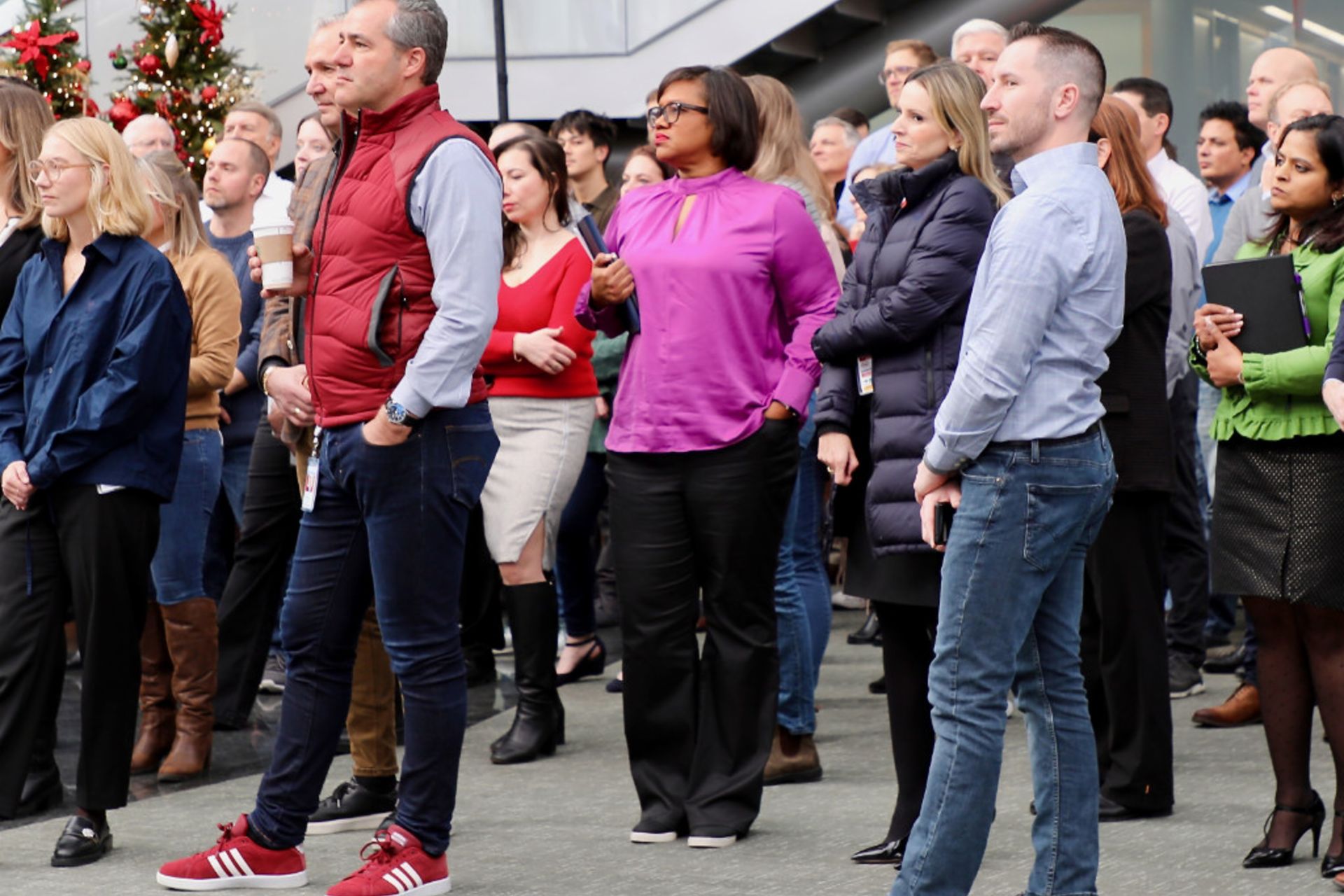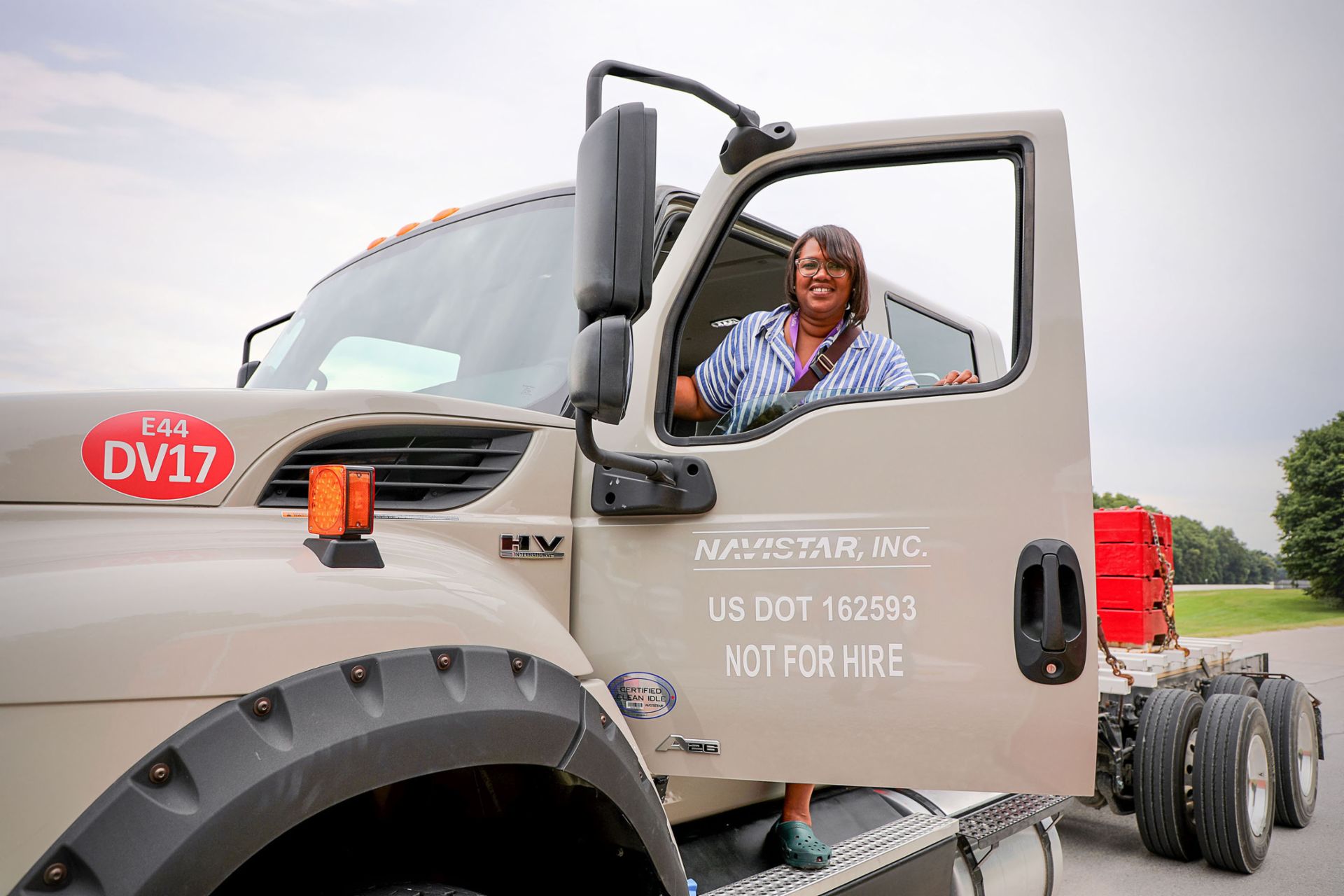This year, you’ll celebrate 20 years at Navistar. Can you share key milestones and highlights from your career journey, including those that shaped your path to becoming Executive Vice President and Chief People & Culture Officer?
It has been an exciting journey – with many ups and downs – but I wouldn’t trade it for anything. In my early days at Navistar Financial Services, we did amazing things to engage employees and to develop leaders. One experience was our annual managers’ meeting where we invited attendees to deepen their knowledge of the business, sharpen their leadership skills and have fun together. We won a ‘Best Places to Work’ award for our efforts.
Another milestone was the cultural transformation we achieved when integrating vehicle engineering in Fort Wayne, Indiana with powertrain engineering in Melrose Park, Illinois. We created an Integrated Product Development organization to savor the best of both cultures.
Lastly, my involvement in the Joint Venture with TRATON and future acquisition was a significant highlight. Before the acquisition I collaborated with my HR/P&C colleagues at the other brands. Following the acquisition, I drew on these relationships and, having begun learning about various corporate and country cultures, could capitalize on synergies.
How has your career background contributed to your current role, and what unique perspective do you bring to it?
I’ve experienced the diversity and passion of our employees across many roles at Navistar. Building relationships, practicing empathy, and displaying grace have been my keys to success. As a woman of color, my experience is unique to most of my colleagues. But that’s not the only unique perspective I bring to Navistar and my community – everyone brings multiple dimensions of themselves and their life experiences to everything we do.
Growing up in a family with strong female role models has influenced how I lead and communicate the soul of Navistar to employees and the outside world. As my grandmother said, consider that others before you made sacrifices so you can be where you are. Never apologize for having your own opinion or perspective. Lastly, be confident and seen in every situation you’re in because you deserve to be there. These lessons have brought a unique perspective to my life, not just my work.

What challenges and opportunities have you encountered in your role, particularly concerning human resources strategy in the dynamic transport sector?
In my 20 years at Navistar, we’ve seen many very dynamic changes. I try to find opportunities in every challenge. When I started my role leading People & Culture, our team was significantly impacted as the workforce was reduced. We learned to optimize the resources we had and relentlessly prioritized what we could do to meet the needs of the business.
During the pandemic, the role of P&C became even more critical to the success of the business. We helped managers develop their empathy skills and worked to keep our colleagues and their families physically and mentally healthy, so we ramped up our Wellbeing and DEI programs. Our P&C strategy shifted to support employees’ desire to have a sense of belonging.
Navistar operates globally with over 15,000 employees and is part of the 100,000-strong TRATON GROUP. How do you align human resource strategies with diverse cultural contexts while ensuring a cohesive organizational culture?
Joining the TRATON GROUP has been one of my greatest challenges AND greatest opportunity. When we talk about cultural differences, it’s not as simple as saying ‘you’re from Germany, Sweden or Brazil and I’m from the United States’. You must layer on company culture. The collaboration across the People & Culture teams from all brands is a role model, in my opinion, for how to gain the greatest synergies and potential of the Group.
The inclusive nature in which we work and the high level of trust we have with one another leads to succinct alignment of human resource strategies where it makes sense. We don’t align in all cases, but that’s ok. In fact, in a Group of our size with representation in many countries, it must be different. However, the alignment is in the spirit of the strategy, not the execution of it.
With the transition to electrification and increased digitization, including the emergence of generative AI, the transport industry is undergoing a profound transformation. How do you ensure Navistar and its HR department adapt to evolving trends?
At Navistar, we’ve employed several strategies to ensure we remain at the forefront of industry trends. For example, we’ve focused on enhancing leader and manager effectiveness to keep up with evolving expectations. Today’s work environment demands leaders who are empathetic and adaptive, and we help prepare them for the future by reinforcing our Group Values and fostering authentic leadership.
We’ve also balanced transformational initiatives with employee well-being and assess engagement to enhance the overall employee experience. We use analytics to identify recruitment trends and optimize our talent acquisition efforts.
As a leader in a traditionally male-dominated industry, what has been your experience as a woman in transport? How have you navigated challenges or biases during your career?
Like many women of color, I felt if I did a great job, opportunities for growth and promotion would come. However, that’s not always the case. I’ve learned that I must be the megaphone for my accomplishments, and that I have a responsibility to lift other women as I rise. When I can amplify the good work and leadership potential for other women I bring their talents, skills, and abilities to conversations when they’re not there to do so themselves. Oftentimes I was the only woman in the room. My goal has always been to change that.
Looking ahead, how do you envision the future of human resources within the transport sector? What advice would you give to young women considering careers in this dynamic and evolving industry?
The transport sector will continue to evolve, and so will its human resource practices. Like other industries, it will face a continuing workforce shortage, so attracting and retaining talent will be critical. I expect transport companies to emphasize that they offer not just jobs but long-term careers and to highlight how their employees contribute to essential work. We’ll also deal with an aging workforce, so investing in training and education will be crucial to developing skilled replacements.
At the same time, electrification and digitization will continue to reshape the industry, and we’ll need to anticipate the impact on job roles and prepare employees for technological changes. There will be a continued emphasis on work-life balance, so we’ll need to offer programs that promote this while reducing burnout. Finally, succession planning will become more important as we work to ensure continuity in our leadership roles.



